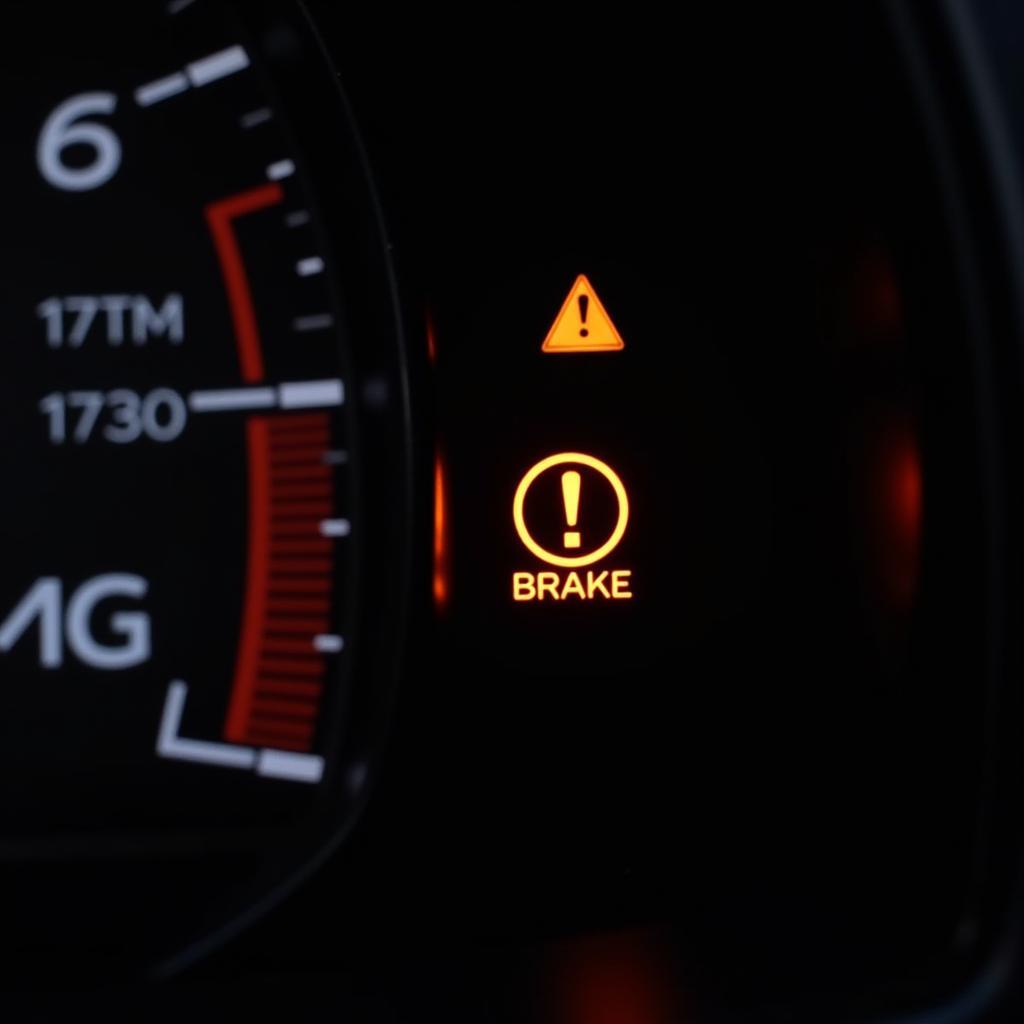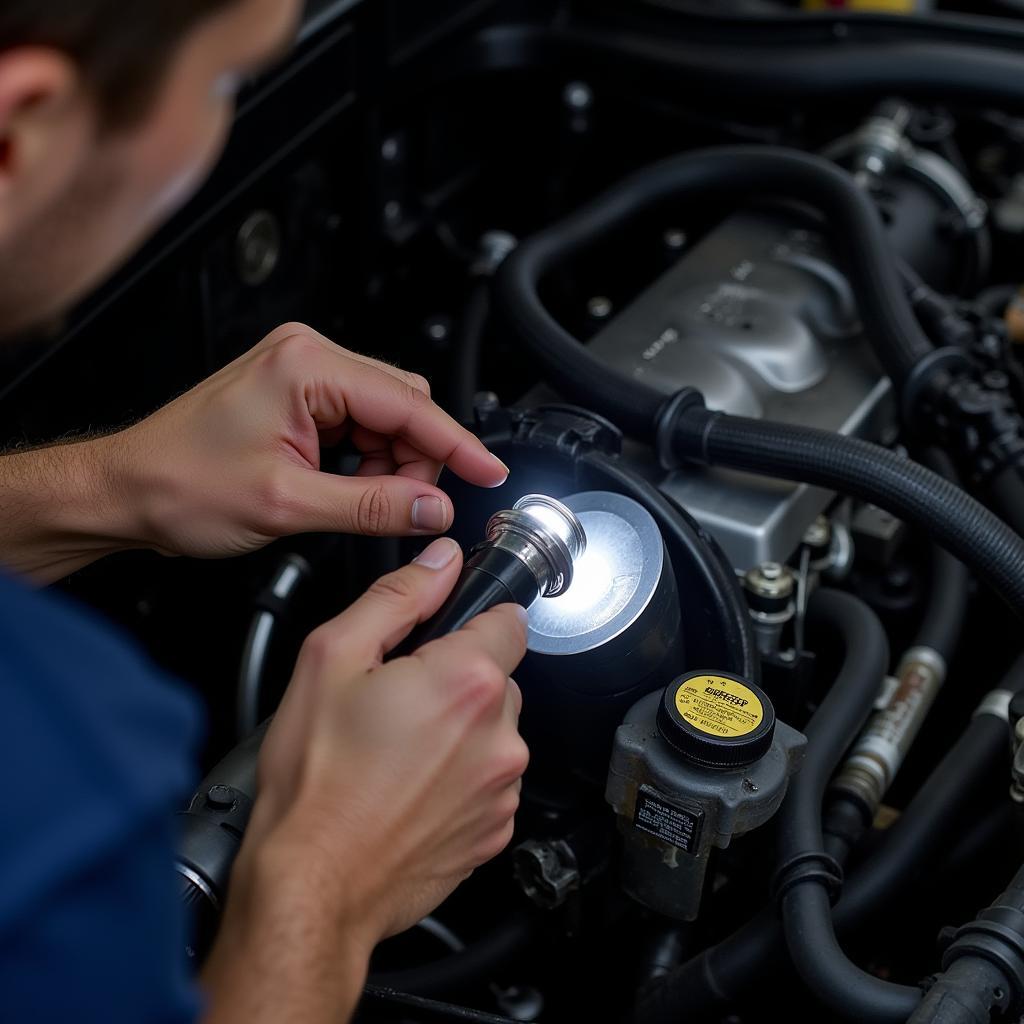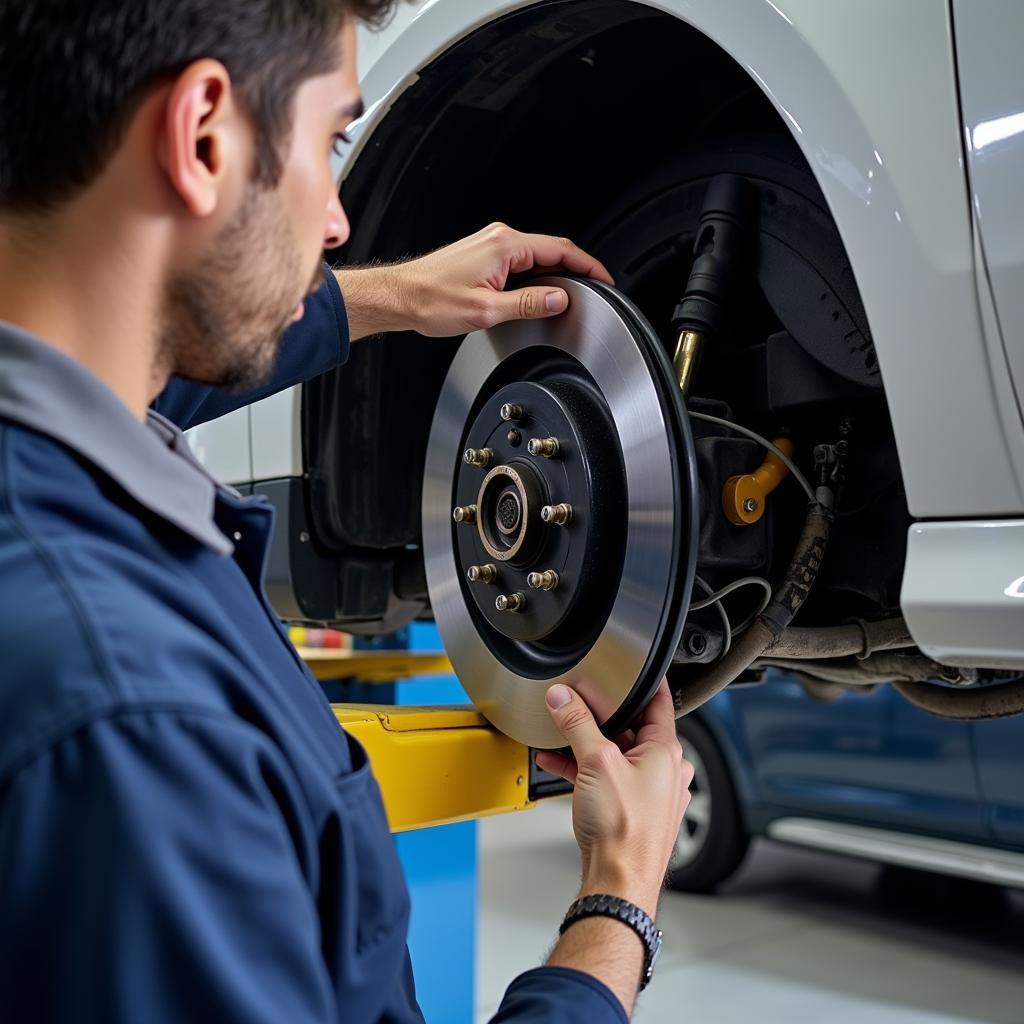The hand brake warning light is an essential safety feature in your vehicle. It’s that little light on your dashboard, often symbolized by an exclamation mark inside a circle and the letter “P” or the word “BRAKE”, that illuminates when your handbrake – or parking brake as it’s sometimes called – is engaged.
While this might seem obvious, the hand brake warning light can signify more than just an engaged parking brake. It can also point to potential problems within your braking system that need immediate attention.
Understanding the Hand Brake Warning Light
The primary function of the hand brake warning light is straightforward: to alert you that your parking brake is on. This is crucial because driving with the parking brake engaged can lead to serious damage, including overheated brakes, worn-out brake pads, and potential tire failure.
However, the hand brake warning light can also signal a few other issues, such as:
- Low brake fluid: One of the most common reasons for a persistent hand brake warning light is low brake fluid. Your braking system relies on hydraulic pressure created by brake fluid to function correctly. When the fluid level drops too low, it can trigger the warning light.
- Faulty brake light switch: The same switch that activates your brake lights also plays a role in the hand brake warning system. If this switch malfunctions, it can lead to a false positive, causing the warning light to illuminate even when the handbrake isn’t engaged.
- Worn brake pads: While not directly related to the handbrake, some vehicles use the same warning light to indicate worn brake pads. If you’ve recently had your brake pads replaced and the light persists, this might not be the issue.
 Hand Brake Warning Light on Dashboard
Hand Brake Warning Light on Dashboard
Troubleshooting a Hand Brake Warning Light
If your hand brake warning light comes on, the first thing to do is to ensure your parking brake is fully disengaged. If the light goes off, you’re good to go. However, if the light stays on or flickers intermittently, it’s time to investigate further.
Here’s a step-by-step guide on what you can do:
- Check your brake fluid level. This is the easiest and most accessible check you can perform yourself. Locate the brake fluid reservoir under your hood (refer to your owner’s manual if needed), and visually inspect the fluid level. It should be between the minimum and maximum markings on the reservoir.
- Top up brake fluid (if necessary). If the brake fluid level is low, carefully add the correct type of brake fluid recommended for your car model.
- Inspect for leaks. While checking the brake fluid level, look for any signs of leaks around the reservoir, brake lines, and near the wheels. Brake fluid is typically clear or amber in color and has a slightly oily texture.
- Check your brake lights. Have a friend or family member press the brake pedal while you check if all your brake lights are working correctly. If you find any faulty brake lights, it could indicate a problem with the brake light switch.
 Mechanic Checking Brake Fluid Level
Mechanic Checking Brake Fluid Level
When to Seek Professional Help
If you’ve performed the basic checks and the hand brake warning light persists, it’s crucial to seek professional help.
“Ignoring a persistent hand brake warning light can be risky,” says Jake Miller, a senior automotive technician with over 15 years of experience. “It could indicate a serious underlying problem with your braking system that could compromise your safety on the road.”
Modern vehicles often rely on complex electronic systems to manage braking. Diagnosing these systems requires specialized equipment and expertise that are best left to trained professionals.
Preventing Hand Brake Warning Light Issues
While some issues require professional attention, you can take some preventive measures to minimize the chances of encountering hand brake warning light problems:
- Regularly check your brake fluid level: Make it a habit to check your brake fluid level at least once a month or as part of your routine vehicle maintenance checks.
- Don’t ignore the warning light: Addressing the issue promptly can prevent more serious and costly repairs down the line.
- Schedule routine brake system inspections: Consult your owner’s manual for the recommended brake system inspection intervals for your vehicle model.
 Car on Lift for Brake Inspection
Car on Lift for Brake Inspection
Conclusion
The hand brake warning light is a crucial safety feature that should never be ignored. While it’s often associated with an engaged parking brake, it can also indicate other potential problems within your braking system. Understanding the various reasons behind an illuminated hand brake warning light and knowing how to troubleshoot basic issues can save you from potential hazards on the road. Remember, when it comes to brakes, it’s always better to err on the side of caution and seek professional help when needed.
FAQs
1. Can I drive with the hand brake warning light on?
It’s not advisable to drive with the hand brake warning light illuminated. If the light persists after disengaging the parking brake, it could indicate a problem with your braking system.
2. How often should I check my brake fluid level?
It’s a good practice to check your brake fluid level at least once a month or during your routine vehicle maintenance checks.
3. What type of brake fluid does my car need?
Refer to your owner’s manual for the recommended brake fluid type for your specific vehicle model.
4. Can I top up the brake fluid myself?
Yes, you can top up the brake fluid yourself. However, ensure you use the correct type of brake fluid and avoid overfilling the reservoir.
5. Is it safe to ignore the hand brake warning light if my brake pedal feels normal?
No, it’s not safe to ignore the warning light even if your brake pedal feels normal. The light could indicate a problem that hasn’t yet affected brake pedal feel but could worsen over time.
